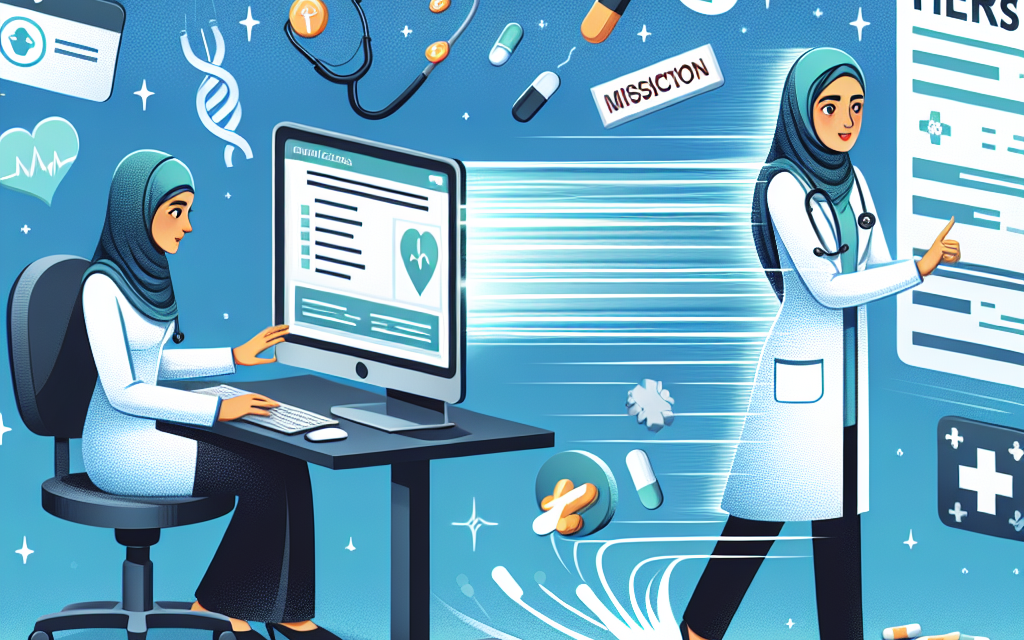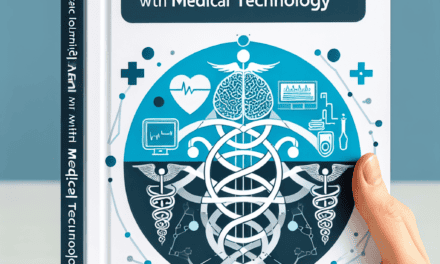Enhancing Patient Safety: The Role of EHRs in Minimizing Medical Errors

In the ever-evolving landscape of healthcare, patient safety remains a paramount concern. Medical errors, which can lead to adverse patient outcomes, are a significant challenge that healthcare systems worldwide strive to address. Electronic Health Records (EHRs) have emerged as a pivotal tool in enhancing patient safety by minimizing medical errors. This article delves into the multifaceted role of EHRs in reducing medical errors, exploring their impact through various dimensions.
The Evolution of EHRs and Their Impact on Patient Safety
The journey of Electronic Health Records (EHRs) from paper-based systems to sophisticated digital platforms has been transformative for healthcare. Initially, EHRs were primarily used for administrative purposes, but their role has expanded significantly over the years. Today, EHRs are integral to clinical decision-making, patient management, and safety protocols.
One of the most significant impacts of EHRs on patient safety is their ability to provide comprehensive and accurate patient information. By consolidating patient data from various sources, EHRs ensure that healthcare providers have access to complete medical histories, which is crucial for making informed decisions. This comprehensive data availability reduces the likelihood of errors that can occur due to incomplete or inaccurate information.
Moreover, EHRs facilitate real-time access to patient data, enabling healthcare providers to make timely decisions. In emergency situations, where every second counts, the ability to quickly retrieve patient information can be life-saving. EHRs also support the integration of clinical decision support systems (CDSS), which provide evidence-based recommendations to clinicians, further enhancing patient safety.
Statistics underscore the positive impact of EHRs on patient safety. According to a study published in the Journal of the American Medical Informatics Association, the implementation of EHRs was associated with a 30% reduction in medication errors. This significant decrease highlights the potential of EHRs to transform patient safety outcomes.
Reducing Medication Errors Through EHRs
Medication errors are among the most common types of medical errors, often resulting in adverse drug events (ADEs) that can harm patients. EHRs play a crucial role in minimizing these errors through various mechanisms.
One of the primary ways EHRs reduce medication errors is through computerized physician order entry (CPOE) systems. CPOE allows healthcare providers to enter medication orders directly into the system, eliminating the need for handwritten prescriptions. This reduces the risk of errors due to illegible handwriting or transcription mistakes. Additionally, CPOE systems often include built-in checks for potential drug interactions, allergies, and dosage errors, providing an additional layer of safety.
Another significant feature of EHRs that contributes to reducing medication errors is the integration of barcoding technology. Barcoding ensures that the right medication is administered to the right patient at the right time. By scanning barcodes on both the patient’s wristband and the medication, healthcare providers can verify that the correct drug and dosage are being administered, significantly reducing the risk of errors.
Case studies have demonstrated the effectiveness of EHRs in reducing medication errors. For instance, a study conducted at a large academic medical center found that the implementation of an EHR system with CPOE and barcoding reduced medication errors by 50%. This substantial reduction highlights the potential of EHRs to enhance patient safety in medication management.
Enhancing Communication and Coordination Among Healthcare Providers
Effective communication and coordination among healthcare providers are essential for ensuring patient safety. EHRs facilitate seamless communication by providing a centralized platform for sharing patient information across different healthcare settings.
One of the key features of EHRs that enhances communication is the ability to share patient data in real-time. This ensures that all members of the healthcare team have access to the most up-to-date information, reducing the risk of errors due to miscommunication or outdated data. For example, if a patient is transferred from one department to another, the receiving team can access the patient’s complete medical history, including recent test results and treatment plans, ensuring continuity of care.
EHRs also support the integration of secure messaging systems, allowing healthcare providers to communicate directly within the platform. This reduces the reliance on external communication methods, such as phone calls or emails, which can be prone to errors or delays. Secure messaging within EHRs ensures that communication is documented and easily accessible, enhancing accountability and reducing the risk of miscommunication.
Furthermore, EHRs facilitate care coordination by providing tools for scheduling and tracking patient appointments, referrals, and follow-ups. This ensures that patients receive timely care and that healthcare providers are aware of upcoming appointments or necessary interventions. By streamlining care coordination, EHRs reduce the risk of missed appointments or delayed treatments, which can compromise patient safety.
Improving Diagnostic Accuracy with EHRs
Diagnostic errors are a significant concern in healthcare, often leading to delayed or inappropriate treatment. EHRs contribute to improving diagnostic accuracy by providing healthcare providers with comprehensive patient data and decision support tools.
One of the primary ways EHRs enhance diagnostic accuracy is through the integration of clinical decision support systems (CDSS). CDSS provide evidence-based recommendations and alerts to clinicians, helping them make informed diagnostic decisions. For example, if a patient’s symptoms and test results suggest a particular condition, the CDSS can provide relevant guidelines or suggest additional tests to confirm the diagnosis. This reduces the risk of misdiagnosis and ensures that patients receive appropriate care.
EHRs also support diagnostic accuracy by providing access to a patient’s complete medical history, including previous diagnoses, treatments, and test results. This comprehensive view allows healthcare providers to identify patterns or trends that may be relevant to the current diagnosis. For instance, if a patient has a history of recurring symptoms, the EHR can help identify potential underlying causes that may have been overlooked in previous assessments.
Case studies have demonstrated the impact of EHRs on diagnostic accuracy. A study published in the Journal of General Internal Medicine found that the use of EHRs with integrated CDSS reduced diagnostic errors by 20%. This improvement highlights the potential of EHRs to enhance diagnostic accuracy and improve patient outcomes.
Addressing Challenges and Maximizing the Benefits of EHRs
While EHRs offer significant benefits in enhancing patient safety, their implementation and use are not without challenges. Addressing these challenges is crucial to maximizing the benefits of EHRs and ensuring their effective use in minimizing medical errors.
One of the primary challenges associated with EHRs is the potential for information overload. With vast amounts of data available, healthcare providers may struggle to identify relevant information, leading to decision fatigue or oversight. To address this challenge, EHR systems must be designed with user-friendly interfaces and tools that prioritize and highlight critical information. Additionally, training healthcare providers on effective data management and navigation within EHRs can help mitigate the risk of information overload.
Another challenge is the potential for technical issues or system failures, which can disrupt access to patient data and compromise patient safety. To address this, healthcare organizations must invest in robust IT infrastructure and support systems to ensure the reliability and security of EHRs. Regular system updates and maintenance, as well as contingency plans for system downtime, are essential to minimize disruptions and ensure continuity of care.
Furthermore, the successful implementation of EHRs requires collaboration and buy-in from all stakeholders, including healthcare providers, administrators, and patients. Engaging stakeholders in the design and implementation process can help address concerns and ensure that EHR systems meet the needs of all users. Additionally, ongoing training and support for healthcare providers are crucial to ensuring the effective use of EHRs and maximizing their potential to enhance patient safety.
Conclusion
Electronic Health Records (EHRs) have emerged as a powerful tool in enhancing patient safety by minimizing medical errors. Through their ability to provide comprehensive and accurate patient information, reduce medication errors, enhance communication and coordination, improve diagnostic accuracy, and address challenges, EHRs play a pivotal role in transforming healthcare delivery. As healthcare systems continue to evolve, the effective use of EHRs will be essential to ensuring patient safety and improving outcomes. By addressing challenges and maximizing the benefits of EHRs, healthcare organizations can create safer and more efficient systems that prioritize patient well-being.





